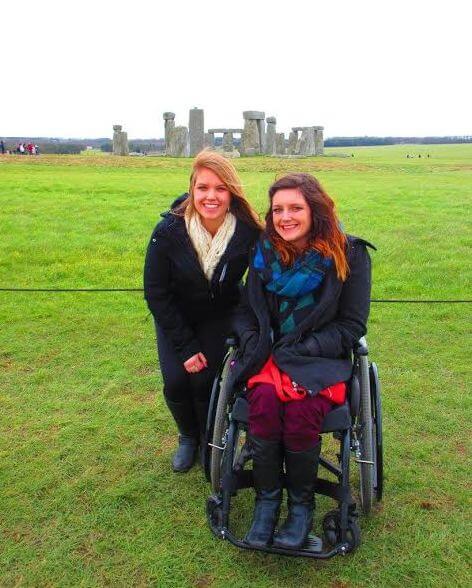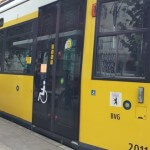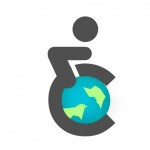*This is a guest post from Grace Kestler*
Before visiting Stonehenge I didn’t know much about it. I remember seeing photos in my anthropology textbooks and being curious why a large stone structure had become historically relevant. What is even more interesting about Stonehenge is the continuous mystery of how it was built.
Stonehenge is an extremely important piece of prehistory located just outside London, England, in Wiltshire. The construction of the original stone ring structure and surrounding burial mounds dates back to 3000 B.C. Over about 1000 years, the structure was built by our Neolithic ancestors and is thought to have been used in a variety of ways including burials, hunting and as an astronomical calendar. Of course since the history is so extensive, it is difficult to identify the entirety of its varied purposes over time.
The structure and grounds has been listed as a UNESCO World Heritage Site since 1986. It has become a major tourist attraction for people from all over the world. Some restoration has been done in order to preserve the site but the remaining stones are original. My visit to Stonehenge was mesmerizing and enlightening.

Getting to Stonehenge & Tickets:
The location, not surprisingly, is in the middle of a field. Although there is a major highway that runs nearby, the museum and exhibits are in the countryside. My arrival to Stonehenge was by car. Of the various ways to get there, this was probably the most convenient. Alternatively, there are tour buses that run every day from surrounding cities to the site. Unfortunately, not all of these buses are wheelchair accessible but do have space for a folding wheelchair if you can use stairs. If you’re traveling by bus I recommend you come from Salisbury. You can travel to Salisbury by accessible train and then take an accessible bus to the site. I can’t recommend a specific bus company but from my experience in England, many companies have accessible options. The key is to call ahead.
I will tell you about my experience at the site but the Stonehenge website also has a nice page directed towards the needs of visitors with disabilities. It covers a number of adaptations they have implemented for people with all types of disabilities.
Tickets are also a necessity for your visit. To avoid potential long lines at the entrance, I recommend buying online before you visit. While tickets are a little expensive, they have a variety of packages and discounts for families and individuals. An individual with a disability is allowed to bring one carer or attendant with them at no additional cost. While the exhibit is open until 8 pm, they will not let any visitors inside after 6 pm. A nice perk is that the exhibit is open year round, 7 days a week.
The Stonehenge Exhibit:
When arriving to the museum you may be confused as to where the stones are or why they are not visible. The stones are located about a mile from the main museum building that you enter upon arrival. If driving, there are plenty of accessible parking spaces very close to the building. I had no problem rolling my wheelchair on any of the paths. When entering the museum the floors are smooth concrete that allow for easy access. If you pre-purchased tickets online your party can join the shorter line. Audio guides and other accessible reading options are available at the desk. The facility also offers individual accessible toilets, including one that has a changing table.
The museum exhibits describing Stonehenge history are located in this building as well. I recommend going through it first, as it will give you a detailed background on the history of the stones. This exhibit takes 30-40 minutes to view. It includes artifacts, videos and other interactive exhibits that are great for all ages.
When you have decided to head out to the stones your party will make their way to the back of the building (there are many signs). There you will board a bus that will drive you to the stones. Each bus has a ramp that can be deployed for those who may need it. The bus will drop you off outside the stones where you will take the path around the stones. Visitors are unable to touch the stones so a rope has been installed encircling them.
The surrounding path is made of dirt and grass but is flat and easily manageable for wheelchairs. I had no trouble rolling around in my manual wheelchair. The surrounding land is available for tourists to view and walk through but is not all accessible for wheelchairs as it is mainly fields. There is also an emergency only accessible toilet right near the stones.

Visiting the stones is quite a magical experience. It’s a bit mind boggling to view a piece of history that is over 5,000 years old. Once you are viewing the stones you realize how giant they are. It’s even more impressive that the stones were brought from Wales – hundreds of miles away. As I mentioned, it is also a burial ground so it feels very sacred. It’s interesting to imagine what the stones were used for and their importance to the people who moved them. As time has passed many stones have fallen and the current structure is only a piece of the original structure. The museum offers visuals on what it used to look like.
After your stroll around the stones, you can board the bus back to the main building. There you can visit the gift shop for your Stonehenge memorabilia. They also have a number of interesting history books about the region and the stones.
Overall Experience:
My visit to Stonehenge was very educational and exciting. It was nice to see that the museum has made many efforts in order to be accessible to all visitors. I felt the staff was very helpful and well trained. I definitely recommend a day trip to Stonehenge on your next visit to England. It’s not every day you get to see some of the oldest surviving pieces of human history! stonehenge wheelchair accessible
—————————————————————————————
About the Author – Grace Kestler is a 26 year old living in Berlin, Germany pursuing her Masters in Intercultural Conflict Management. She has been in Berlin for one year, but is originally from Columbus, IN. Grace received her Bachelors in Communication and Anthropology from DePauw University. Additionally, she was born with Muscular Dystrophy and has been using a wheelchair most of her life. She loves to travel and learn about different cultures! In her free time she enjoys a good beer or exploring a new cuisine and spending time outdoors.







